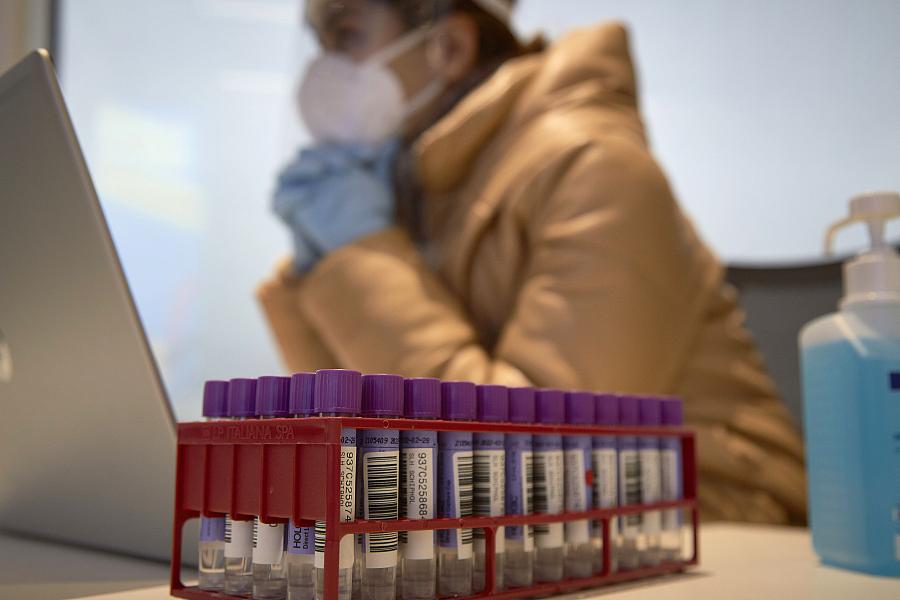A top infectious disease doc breaks down the omicron threat and latest findings

(Getty Images)
Dr. Céline Gounder was recently speaking with a journalist who described her plan to move on from the exhaustion of constant COVID coverage.
“That is privilege to be able to say, ‘I’m not going to face this anymore,” said Gounder, a prominent infectious disease physician, epidemiologist, and medical journalist. “When you turn your back on a problem like this, you exacerbate the disparities and inequities.”
The reminder came as journalists are facing what’s likely to be a deluge of COVID news in the weeks to come. Gounder, a clinical assistant professor of medicine and infectious diseases at New York University’s Grossman School of Medicine, briefed journalists in a Center for Health Journalism webinar this week on the threat posed by omicron, as the variant fuels panic amid surging case numbers in countries around the globe.
The rise of omicron
The United States was already facing a winter surge of the delta variant, with hospitalizations and deaths increasing. Then, along came omicron.
Some states are already seeing more than 13% of COVID cases from the omicron variant. Figures are expected to shoot up throughout the country in the next several weeks, following the pattern of South Africa and European countries such as Denmark and the UK, she said. It’s likely the U.S. omicron wave could peak in late January with a downward trend in February, she said.

While there have been some early reports that omicron results in a milder disease, that may be misleading — especially if it’s more transmissible, she said. For example, imagine if 0.25% of people die from a variant, compared to 1% in a previous strain. If that new strain infects four times as many people, the death count would be the same. The calculations get even more complex when you consider a person’s immune status, such as their prior infection history, number of vaccine doses and the timelines for each.
Plus, early data on omicron was focused on younger healthier populations, which are more likely to experience a less severe case, she pointed out. “You really should not be drawing conclusions based on how omicron plays out in that population,” she said.
Do existing vaccines work?
Even though omicron is referred to as “immune evasive,” that doesn’t mean current vaccines don’t offer any protection.
She compared antibodies to strips of Velcro. One strip of super sticky Velcro may have been enough to halt an infection from earlier COVID variants. Now, someone might need 20 or even 40 strips to achieve that same level of protection, since omicron is better at dodging the weaker Velcro offered by vaccines.
“You can actually still catch the virus — you just need more strips,” she said. “You can override the drop in stickiness by just having more.”
In the short term, the booster dose is helpful in bumping up the number of Velcro stirps, or antibodies. Early estimates for mRNA vaccine efficacy among fully boosted people are around 75%. There’s also hope that the third dose will signal to the immune system that it needs to keep making guesses about how this virus will evolve.
Stopping infection altogether, though, is a challenging goal with a respiratory virus, especially with a variant that has a short incubation period of several days. Once someone’s antibody levels wane—a normal part of the vaccination process — the immune system retains powerful memory cells that can create new antibodies. That takes time to kick in once infected, though.
“It’s a race between your immune system and the virus,” she said.
Find a scientist friend
The best resources for reporters covering this rapidly evolving development is to read the primary scientific literature, Gounder said.
“Become good buddies with your local scientists,” she added pointing to people who are trained in infectious diseases, epidemiology, virology, immunology, or vaccines.
These experts can provide journalist with an unofficial peer review on pre-prints, offering important caveats and context that can be missing when lay media report on such studies without the help of scientists. Consider asking experts to share their biases along with specific areas of focus. She also urged journalists to find sources with specific qualifications for the area of research they’re reporting on — an ER doctor or cardiologist is not going to be the most qualified person to talk about questions of immune response or vaccines, for instance.
The current scientific literature on omicron is limited but there is some evidence that higher level of antibodies can stand up to an omicron infection. Other new studies have looked at whether there are different levels of the virus in different tissues compared to other COVID variants. Some early research suggests patients harbor a higher level of omicron on the bronchi, and less in the lungs, where one is at higher risk of developing more severe disease. That might explain why the variant is less virulent but more contagious. If there’s more in the bronchi, it’s more easily breathed into the environment.
Time and real-world data will offer the best clues about how different populations experience the variant.
“You really just have to wait for that wave to occur and study in real time,” she said.
Layering protection
In the meantime, consider how to layer protections, especially as case counts climb. Along with getting fully vaccinated, Gounder recommends doubling down on masks.
N95 respirators offer the best protection but can be less comfortable to wear. Other highly protective options with tight seals around the face are the KN95, and KF94s. Surgical masks and cloth masks, while not useless, are much less effective, she said.
Another layer of protection lies in improving ventilation and air filtration. Gounder suggested using a HEPA filter and opening doors and windows when having guests over, or – even better—holding activities outdoors.
Rapid tests are also helpful, though they can be cost prohibitive. These tests measure how much virus there is in the body at the time of testing. Since there is an incubation period, though, testing should occur every day you spend together.
As community transmission of omicron rises, it’s important consider how to make gatherings safe for people at higher risk for severe disease. For example, if Gounder was personally meeting with high-risk older adults, she would consider outdoor eating and indoor masking, even if the parties were vaccinated.
“That’s how you protect the most vulnerable people,” she said.
**
Watch the full presentation here:

